Cave of Horrors Relinquishes Treasure Trove of Heritage Antiquities
"These finds are not just important to our own cultural heritage, but to that of the entire world.""The scroll fragments containing biblical texts, the coins and the additional finds from the Second Temple Period that were found in this unique project directly attest to the Jewish heritage of the region and the inseparable bond between the Jewish cultural activities and our place in this land."Avi Cohen, CEO, Ministry of Jerusalem and Heritage, Israel"The desert team showed exceptional courage, dedication and devotion to purpose, rappelling down to caves located between heaven and earth, digging and sifting through them, enduring thick and suffocating dust, and returning with gifts of immeasurable worth for mankind."Israel Antiquities Authority Director Israel Hasson
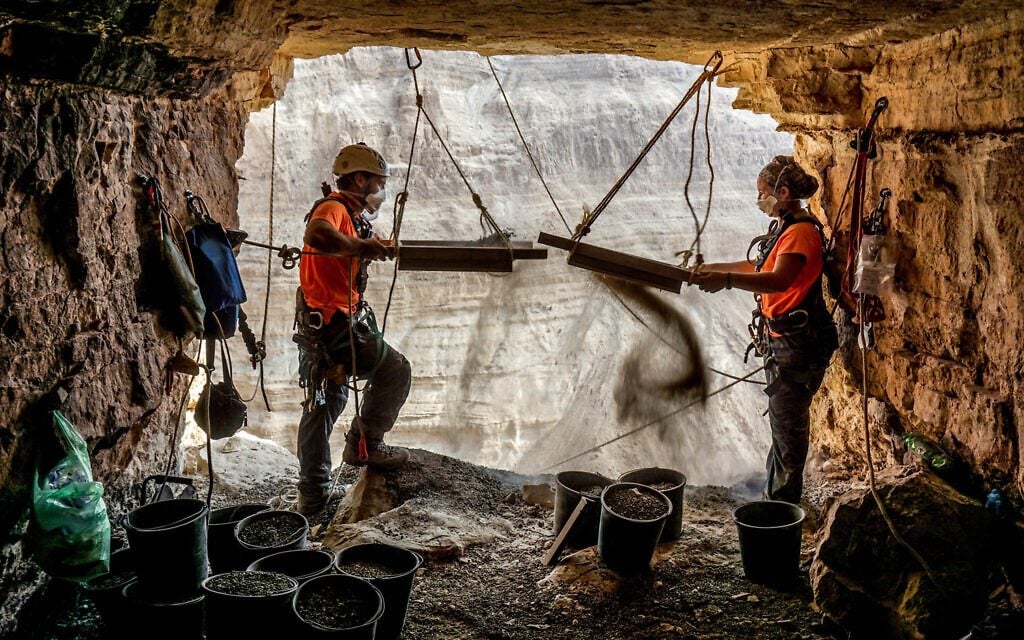 |
| Archeologists Hagay Hamer and Oriah Amichai sifting through finds at the Cave of Horrors. Photo by Eitan Klein, courtesy of the Israel Antiquities Authority. |
Archaeologists are not exactly treasurer hunters; their focus is on discovering messages of the far distant past; items left behind by humans who lived at one time as humanity stretched from the past to the future, developing new technologies from the most basic tools of survival to what we know today as modern technological advances, all built upon the original structure of humankind's inventive genius. These traces and artefacts teach us how others before us lived, what was of importance to them and how societies developed.
Now, a momentous, truly astonishing find has been discovered; more fragments of Dead Sea Scrolls, along with coinage and even more ancient totems of the past. All of which further affirm the ancient heritage of the tribe known as Jews in their ancient homeland of Judea in the Middle East echoing down from the past. The new fragments written mostly in Greek, with portions alluding to the name of god in Hebrew, will join the canon of previously-discovered Jewish manuscripts uncaved by Bedouins many years earlier in a similar cave in Qumran.
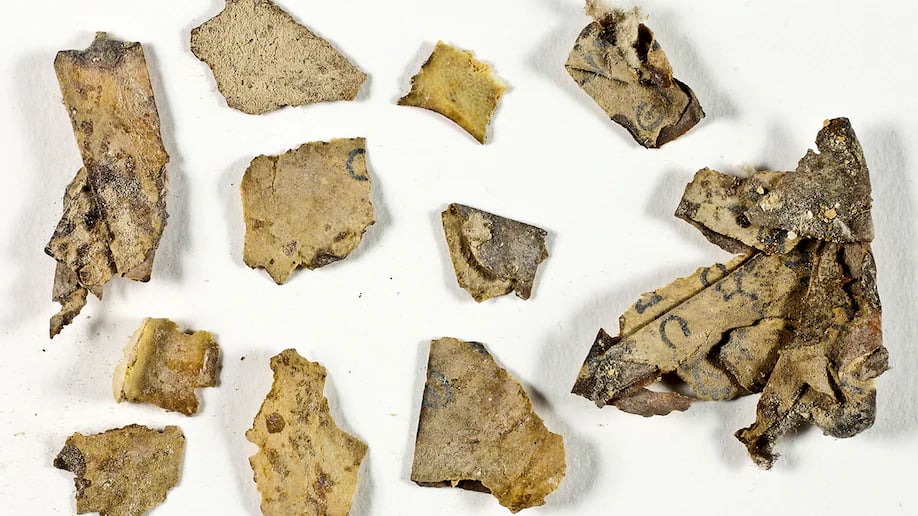 |
| A new Dead Sea Scroll featuring part of the Book of the Twelve Minor Prophets scroll, written in Greek. Photo by Shai Halevi, courtesy of the Israel Antiquities Authority. |
"When we think about the biblical text, we think about something very
static. It wasn’t static. There are slight differences and some of those
differences are important", explained Joe Uziel -- head of the antiquities
authority’s Dead Sea Scrolls unit -- of the biblical text fragments, part of religious manuscripts featuring lines from the book of Zechariah and Nahum, radiocarbon dated to the 2nd Century AD.
Israeli teams of archaeologists have been years in the search throughout the Judean Desert, excavating ancient legacy sites, discovering new ones, and working to preserve the remnants of the past for posterity. This search in the Judean Desert found the archaeologists in previously-visited sets of caves known collectively as the Cave of Horror, so named for the discovery of 40 human skeletons during excavation that took place in the 1960s.
Found there was a cache of millennia-old coins, a 6,000-year-old child's skeleton, protectively wrapped in a blanked perhaps of woven grasses. It was thought to be that of a little girl around the age of six. "The child’s skeleton and the cloth wrapping were remarkably well
preserved. Because of the climatic conditions in the cave, a process of natural
mummification had taken place; the skin, tendons, and even the hair were
partially preserved, despite the passage of time", explained antiquities authority historian Ronit Lupu.
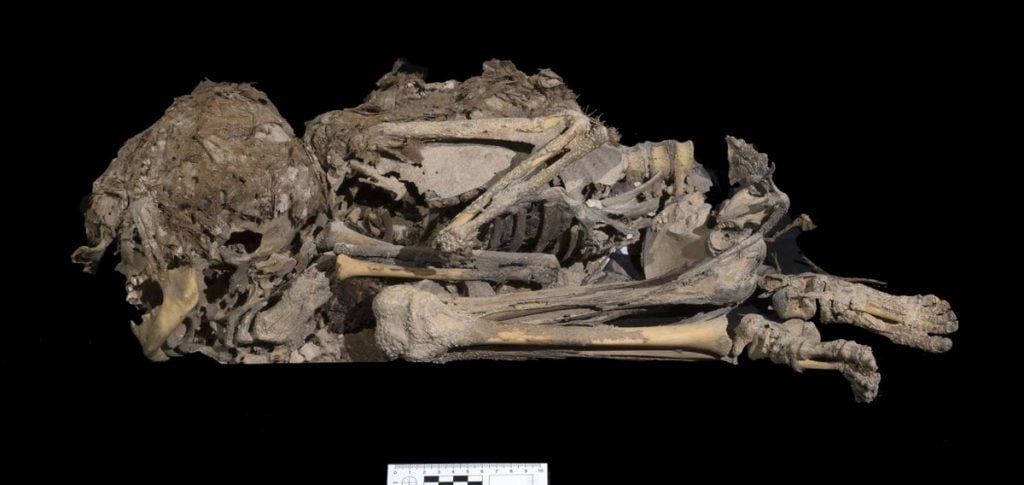 |
| 6,000-year-old skeleton of a girl or a boy who was buried wrapped in cloth. Photo by Emil Aladjem, courtesy of the Israel Antiquities Authority. |
Among many other objects of antiquity, a large basket dated at 10,500 years old was also found, considered by experts to be the oldest, most intact woven basket ever discovered. It was found to contain nothing although it may once have held something. Research may reveal if and what eventually. It was thought by the experts involved that everything in the cave may have been taken there for safe-keeping during the Bar Kochba Revolt, an uprising by armed Jews protesting against Roman occupation during the reign of Emperor Hadrian, 132-136 AD.
It was in a similar cave decades earlier that the bodies of men, women and children were discovered. And high above the caves was discovered remnants of what was once a Roman military encampment. The caves could be reached only by rappelling by rope down from the escarpment above. It was clear that those in the caves were Bar Kochba rebels, under siege by the Romans until they finally died of stark privation.
The archaeological project had been undertaken in an aggressive effort to ensure that more antiquities were not looted by antique thieves for a black market in rare antiquities in the caves and ravines of the Judean Desert. When the original Dead Sea Scrolls were discovered by Bedouin shepherds close to the Dead Sea and the ancient city of Qumran in 1946, the Bedouins had hung the scrolls on a pole. Their existence was finally discovered by a Jewish professor at Hebrew University, and acquired for their heritage preservation.
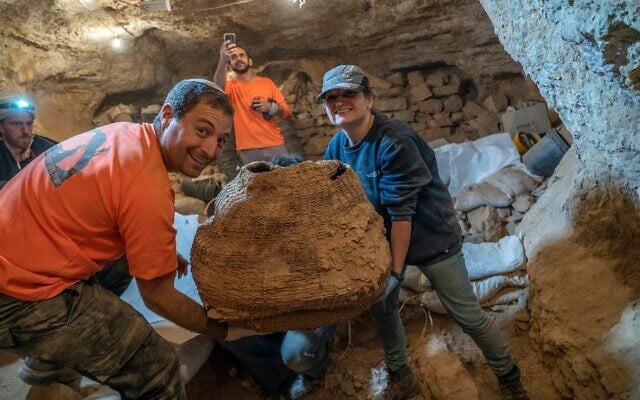 |
| Archaeologists Chaim Cohen and Naama Sukenik with the world’s oldest basket, as found in Muraba‘at Cave. Photo by Yaniv Berman, courtesy of the Israel Antiquities Authority. |
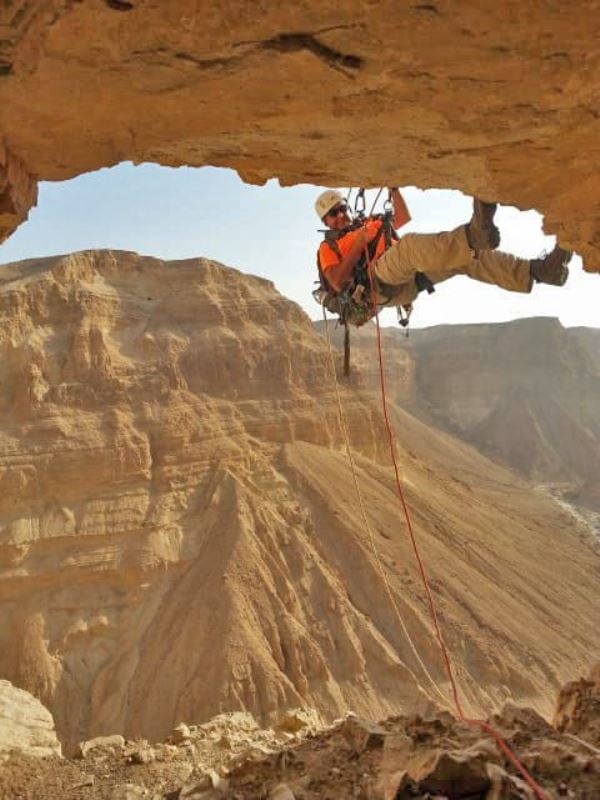 |
| Rappelling to the Cave of Horrors. Photo by Eitan Klein, courtesy of the Israel Antiquities Authority. |
Labels: Ancient Artefacts, Archaeology, Dead Sea Scrolls, Israel, Qumran Cave Complex
0 Comments:
Post a Comment
<< Home